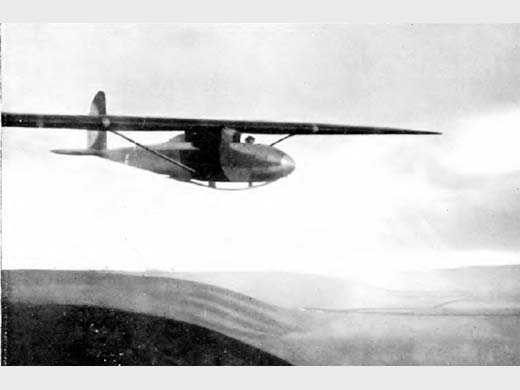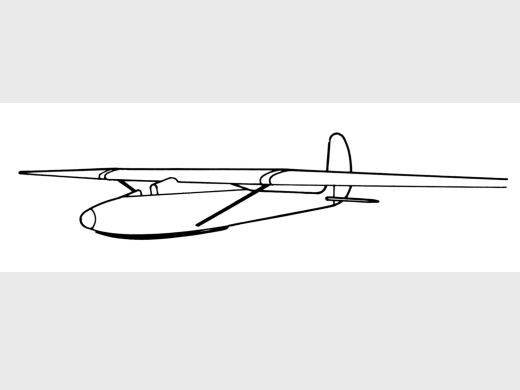
Cloudcraft Phantom
Autre nom (ou nom en langue originelle) : Dickson Phantom| DONNÉES GÉNÉRALES |
| Année du premier vol (ou de design, si seul projet) |
1931 |
| Pays | Angleterre |
| Designer(s) | DICKSON, Roger S. |
| Premier constructeur | Cloudcraft Glider Co, Southampton (UK) |
| Type d'appareil | Planeur |
| Fonction | Performance |
| SPÉCIFICATIONS TECHNIQUES |
| Envergure | 15.54 m |
| Longueur | 7.62 m |
| Hauteur | -- |
| Allongement | 13 |
| Surface alaire | 18.58 m2 |
| Profil aile | RAF 34 modifié |
| Masse à vide | 112 kg |
| Masse maxi | 184 kg |
| Charge alaire | 9.95 kg/m2 |
| Vitesse mini | -- |
| Vitesse maxi | -- |
| Finesse maxi | 26 |
| Taux de chute mini | -- |
| Nb sièges | 1 |
| Structure | Bois et toile |
AUTRES INFORMATIONS
| Constructeur(s) |
| ||||||
| Infos techniques | -- | ||||||
| Histoire résumée | Premier vol à Dunstable le 11 juin 1931. Prix en 1931 : 300 £. The Phantom was a single-seat, clean, high-performance glider designed for Mr Percy Michelson with distance records and a cross-channel flight in mind. The Phantom first flew on 11 June 1931. The Phantom gained its Certificate of Airworthiness in November 1931. Advertisements from July 1931 show that Cloudcraft hoped to sell the Phantom equipped as both Standard and Special models but the company closed for business at the end of 1931, so only was built. One of the Phantom's earliest outings was to the glider demonstration at Bunster Hill, overlooking Ilam, Staffordshire, on 27–28 June 1931, one of the Lyons Tea meetings. Unfortunately, some of the ply became detached near the cockpit and no flights were made. The month after its maiden flight, the repaired Phantom demonstrated its intended long-duration ability by unofficially breaking the British glider duration record with a flight of over 4¼ hours. The pilot was "Mungo" Buxton. It was the first time that the time set by Maneyrol in the Peyret Tandem at the British Glider Competition nine years earlier had been bettered by a British pilot and aircraft in Britain. Its owner, Michelson, intended to try for the Cellon prize for an unpowered cross-English Channel flight but the aircraft was seriously damaged by vandals on the cliffs near Dover. He could not afford to have it repaired and put it up for sale in 1932. The remains were bought by the Bradford and County Gliding Club in April 1933. It seems they wanted it for its instruments and launch rope, for the Phantom was too lightly built for club work. The remains ended up at the Slingsby Aviation works at Kirbymoorside; they were there in 1938[3] but may have been burned during World War II. | ||||||
| Liens personnalités | Pas de personnalité associée. | ||||||
| Compléments docs |
SOURCES DOCUMENTAIRES
| Liens WEB | Site : Wikipedia . Article Cloudcraft Phantom. Texte. (2019-08-21 CL) |
| Livres | British Gliders and Sailplanes 1922-1970 par ELLISON, Norman (1971) [p. 36, 100, 245. Note + croquis + specs]. Motorless flight par ASHWELL-COOKE, John Raymond (1932) [p. 94. Photo]. |
| Autres sources | "The Cloudcraft Phantom" (PDF). Sailplane and Glider. 2 (5): 56. 11 September 1931. "The New Record Holder" (PDF). Sailplane and Glider. 2 (2): 16. 31 July 1931. "Cloudcraft Advertisement" (PDF). Sailplane and Glider. 2 (1): 7. 17 July 1931. "The Meeting at Bunster" (PDF). Sailplane and Glider. 2 (1): 4. 17 July 1931. "For Sale" (PDF). Sailplane and Glider. 3 (13): 155. 22 July 1932. |

Team J2mcL © 2003 -
- Pages optimisées pour Mozilla Firefox

